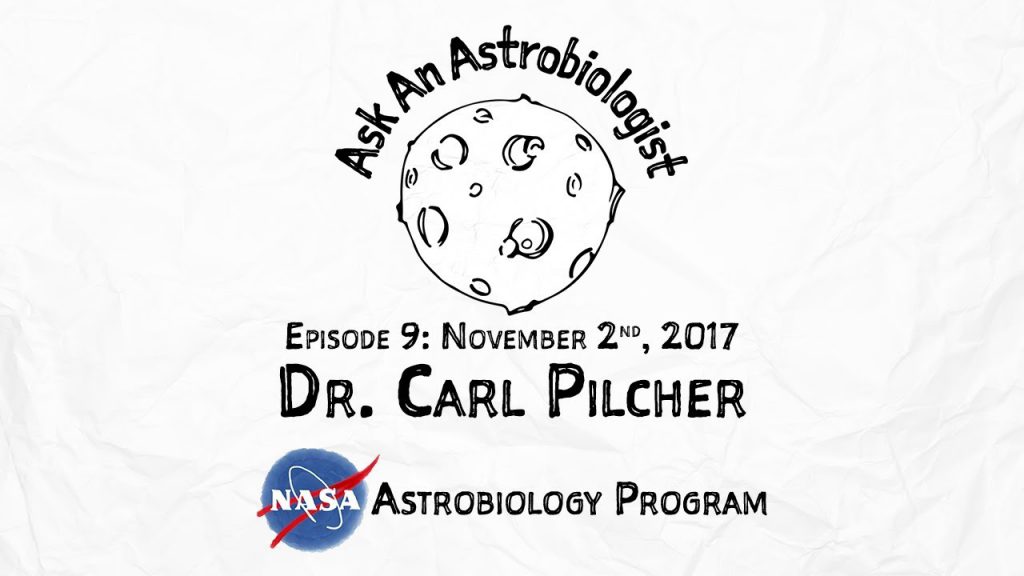BMSIS Scientist Feature: Dr. Carl Pilcher
By Sarah Treadwell
Few people can say they have the career record of Dr. Carl Pilcher. Even less can say they have had the admiration of so many mentees over the years. When it was finally my turn to sit down for a conversation with Dr. Pilcher, the accolades turned out to be justified.
Dr. Pilcher is now retired from a long and exciting career, of which the last 30 years included NASA administration duties. He humorously admitted to me that while the slower pace of retired life is nice, it took him a couple of tries to stay retired. As we settled into conversation, Dr. Pilcher reflected on his career and the path that he followed.
Clearing his throat, he tells me, “What has always sparked my interest and excitement (in astrobiology) is seeing the big picture. Seeing the big picture involves being able to look at things from different perspectives and from the standpoint of different disciplines.”
Dr. Pilcher got his bachelors and doctorate degrees in chemistry from the Polytechnic Institute of Brooklyn and the Massachusetts Institute of Technology. He got involved in space science while working on his PhD, when the need arose for NASA to become more interdisciplinary.
“NASA started sending missions to the planets in the early 1960’s,” said Dr. Pilcher. “ And they needed people who could understand a planet as a planet. They had a need to bring together people who understood geology, who understood the interior of planets, who understood geophysics, who understood atmospheric sciences. And so planetary science got born in the 1960’s as a very interdisciplinary field. And I came into it as a chemist, who then got trained as an astronomer.”
While still a graduate student, Dr. Pilcher led scientific teams that discovered water ice in Saturn’s rings and on three of Jupiter’s Galilean satellites. Upon receiving his Ph.D., he joined the Institute for Astronomy (and later the Department of Physics and Astronomy) faculty at the University of Hawaii, where he discovered and analyzed “weather” on Neptune and participated in the discovery of methane ice on Pluto. He also conducted research on Jupiter’s plasma torus and served as a member of the imaging team of NASA’s Galileo mission to Jupiter.
“It was about a third of the way through my career that I decided I wanted to take it in a direction that was more international and high level,” reflected Dr. Pilcher. “I wanted to maintain a low level of research activity, but really wanted to get into government.”
Sparked by personal interests in history and inspired by his own family background, Dr. Pilcher went back to school to get a degree in international relations, which eventually led him to government work. He began working in the office that Sally Ride established at NASA after the Challenger disaster. There he helped develop international programs in robotic space science missions.
One day in history however, stands out to Dr. Pilcher.
Reflecting on it, he slowly speaks, “And then along came August 7th, 1996.”
On this day was the press conference announcing that evidence for life may have been discovered on a Martian meteorite.

“I had heard rumors while I was at NASA headquarters managing a solar system exploration program,” remembers Dr. Pilcher. “And wow! What an amazing proposition. That there was evidence of life from a meteorite from Mars!?”
This pivotal conference once again changed the trajectory of Dr. Pilcher’s career. He knew this was something he had to be a part of. With training in microbiology from the Marine Biological Laboratory at Woods Hole, Massachusetts, he assumed responsibility for astronomy-related astrobiology programs, including serving as Program Scientist for NASA’s Kepler mission to discover Earth-size planets around other stars and NASA’s participation in the Keck Observatory on Mauna Kea. In 2006 he became the director of the NASA Astrobiology Institute.
Dr. Pilcher has earned the NASA Exceptional Achievement Medal, numerous Group Achievement Awards, an Ames Honor Award, and the NASA Distinguished Service Medal, the highest honor bestowed by NASA on a federal employee. But what he credited as a rewarding part of his career journey was the wide variety of people that make up the field of astrobiology.
“One of the aspects of astrobiology is that it attracts the best and the brightest in many ways,” says Dr. Pilcher. “It attracts people who are just motivated by the questions. It’s an inspirational and aspirational field. It just attracts the best people.”
He continues, “That’s one of the glories of the community. It is filled with the bright and ambitious, in the best sense of the word, energetic people.”
Now retired, Dr. Pilcher enjoys spending time with his family, while also spending some of his time pondering the meaning of human consciousness. He still is exploring some of the biggest questions known to humanity. For a person whose career reached high into the stars, it was a wonderful conversation to have with a very down to Earth and inspirational human.
Sarah Treadwell is a student and communicator of science. She has a passion for sidewalk astronomy and a curiosity for learning how the universe works. She is currently a research associate communicating topic in Earth and space science for the Blue Marble Space Institute of Science.
